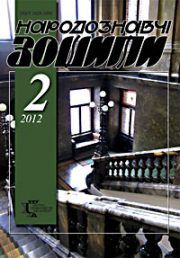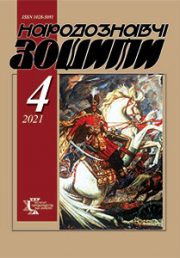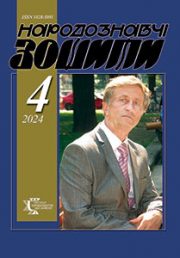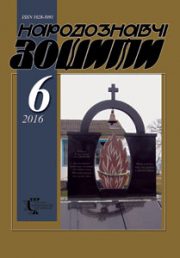The Ethnology Notebooks. 2024. № 2 (176), 456—461
UDK 94(477-25)”10″:7.046.3:27-312.47
DOI https://doi.org/10.15407/nz2024.02.456
KOMARNYTSKY Andrii
- candidate of art history,
- co-head of the icon-painting workshop “Alipiy”,
- member of the National Academy of Sciences,
- 1, Maidan St. Pope John Paul II, 79070, Lviv, Ukraine,
- e-mail: eny_andriy@ukr.net
Abstract. This contribution focuses on the shaping of the Marian and Sophian perspectives within the Kyivan state as a phenomenon that experienced notable growth during the historical period following the adoption of Christianity from the end of the 10th century throughout the 11th century. The consolidation of Christianity in the Kyivan Rus-Ukraine unfolded against the backdrop of a rising sense of state and historical identity among the Ukrainian people at the early stages of a centralized state. During the reign of Volodymyr the Great, the princely elite, driven by socio-political pragmatism, made a choice to officially endorse Christianity as the official religion for the entire state. As a monotheistic religion, Christianity was regarded as a key unifying element conducive to the state’s development. Simultaneously, the figure of the Blessed Mother of God, merged with the notions of Sophia, the Divine Wisdom, emerged as the centerpiece of the developing national spiritual and sacred tradition towards the 11th century. In the article, I further attempt to argue that during the 11th century, the Kyivan state was perceived as both the domicile of the Mother of God and simultaneously as the sanctuary of Divine Wisdom. The fusion of Marian and Sophian perspectives acted as a foundation for the emergence of a «renewed» perception of the Virgin Mary within the local spiritual and sacral traditions and testifies to the distinctive Christian trajectory of the Kyivan Rus-Ukraine. The Cathedral of Saint Sophia, the Wisdom of God, stands as a principal focal point for the religious, state, and cultural life of the Kyivan state, and simultaneously, the foremost center for the development of a unique Marian spirituality integrated with the veneration of Sophia, the Wisdom of God. Given the significance of the Saint Sophia Cathedral as a paramount center of the Kyivan state, the interpretation by Hilarion of Kyiv of the metropolitan cathedral as a seat of the Divine Wisdom extended to the entirety of Kyiv, and by extension, all of Rus-Ukraine.
The purpose of this article is to explore the peculiarities of Marian self-awareness within the centralized state of Kyivan Rus, particularly in relation to its connection with the concepts of Sophian thought within the Kyivan state during the 11th century, a time of its ascendancy.
My research is methodologically based on the principle of historicism in conjunction with the structural-typological approach and the art critique analysis method.
Keywords: Hagia Sophia, the Wisdom of God, the Virgin Mary, the Virgin Orans, Sophianism, Christianity, Baptism, Kyivan State.
REFERENCES
- Makhnovtsya, L.Ye. (1989). The Rus Chronicle according to the Hypatian Codex. Kyiv: Naukova dumka [in Ukrainian].
- Kotlyar, M.F., & Rychka, V.M. (2008). The princely court of Southern Rus in the 10th—13th centuries. Kyiv: Naukova dumka [in Ukrainian].
- Demchuk, R. (2008). The Symbolic Space of the Saint Sophia Cathedral in Rus-Ukraine. Kyiv: Kyiv-Mohyla Academy [in Ukrainian].
- Chubatyi, M. (1965). History of Christianity in Rus-Ukraine: in 2 vol. (Vol. 1). Rome; New York [in Italian; USA].
- Nikitenko, N.M. (2016). Mosaics of Saint Sophia Cathedral in Kyiv. Kyiv: Horobets [in Ukrainian].
- Komarnytskyi, A.S. (2014). The Image of the Virgin Mary and Artistic Culture of Kyivan Rus (Formation of National Features): dissertation for the degree of Candidate of Arts, specialty 26.00.01. Ivano-Frankivsk [in Ukrainian].
- Salko, N.B. (1982). Painting of Ancient Rus in the 11th — early 13th century. Mosaics. Frescoes. Icons. Leningrad: Artist of the RSFSR [in Rusian].
- Hordiienko, D.S. (2015). Dedications of the Desyatynna Church in Kyiv in the Context of Medieval Ukrainian Culture. Sofia Readings (Issue 7, pp. 215—225. Kyiv [in Ukrainian].
- Ovsiiuchuk, V.A. (1996). Ukrainian Painting of the 10th—18th centuries. Problems of Color. Lviv: Institute of Folklore of the National Academy of Sciences of Ukraine [in Ukrainian].
- Nikitenko, N.N., & Kornienko, V.V. (2014). Cathedral of Saint Sophia of Kyiv. Kyiv [in Ukrainian].
- Demchuk, R. (2012). Sophia the Mother of God in the Visual Space of the Orthodox Church. Nestoriv Studies: The Image of the Mother of God in the Culture of Ancient Rus (Pp. 21—29). Kyiv: NKPIKZ [in Ukrainian].
- Averyntsev, S.S. (2007). Sophia-Logos: Dictionary. 3rd edition. Kyiv: Spirit and Letter [in Ukrainian].
- Lohvyn, H.N. (2001). Kyivan Rus: Monumental Art, Iconography, Book Miniature. History of Ukrainian Culture: in 5 vol. (Vol. 1, pp. 884—920). Kyiv: Naukova dumka [in Ukrainian].







